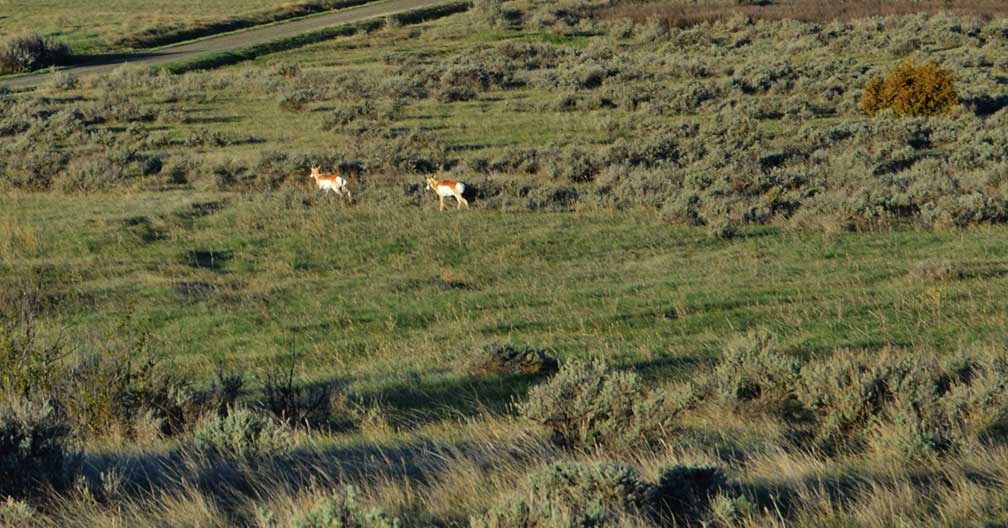
NPS photo S.Smith Little Bighorn Battlefield National Monument is home to a wide variety of terrestrial mammals. They are warm-blooded species that spend all or most of their life on land. They range in size from shrews, tiny mole-like creatures, to 190-pound (86.19 kg) mule deer. These mammals either reside at the monument year-round or occupy home ranges that overlap with the park's boundaries. There are 25 known species of terrestrial mammals in the monument, including five species of bats. These mammals either reside in the monument year-round, or occupy home ranges that overlap the park's boundaries. Some terrestrial mammals, particularly bats, reside in the park only during the warmer months, and migrate south for the winter. Many of the small mammals within the monument are seldom seen. These animals are mainly nocturnal (night-active) or fossorial (underground active) and include mice and insectivores (shrews). Although not often directly observed, the signs of these mammals are often evident. For example, the prairie vole makes shallow underground burrows and runways through surface vegetation. In winter, they tunnel underneath the snow. Their runways have many purposes from predator protection to obtaining food. When walking along the established trails you are likely to see signs of the mountain cottontail. They feed on grasses and woody vegetation including sagebrush. They can be seen any time of the day, but are most active around dawn and dusk. Another group of mammals that delights monument visitors and staff alike are the smaller opportunistic carnivores including the coyote, red fox, and the raccoon. Although these animals are rarely seen, they inhabit many different types of habitat found at the monument. More information is available in the online Montana Field Guide.
|
Last updated: July 3, 2025
